Bare Metal Cloud Market Size 2024-2028
The bare metal cloud market size is forecast to increase by USD 19.11 billion, at a CAGR of 32.14% between 2023 and 2028.
- The market is a dynamic and evolving landscape, characterized by the increasing adoption of infrastructure services that provide direct access to physical servers without the use of virtualization or hypervisors. This market is driven by the growing demand for greater control, flexibility, and performance from businesses across various sectors. One notable trend in the market is the emergence of hyper-convergence technology, which is integrating compute, storage, and networking resources into a single solution. This integration aims to simplify IT infrastructure management and improve interoperability. However, it also introduces new challenges, such as ensuring system compatibility and managing complexity.
- Another factor fueling market growth is the increasing penetration of online content, which necessitates the need for more robust and scalable infrastructure. According to recent studies, the number of internet users worldwide is projected to reach 4.66 billion by 2023, up from 3.96 billion in 2019. This growth presents significant opportunities for Bare Metal Cloud providers, as businesses seek to meet the demands of their digital customers. Despite these opportunities, challenges remain. For instance, ensuring system integration and interoperability across different cloud platforms and on-premises infrastructure can be complex. Additionally, managing security and compliance in a Bare Metal Cloud environment requires specialized expertise and resources.
- In summary, the market is a rapidly evolving landscape, driven by the growing demand for greater control, flexibility, and performance from businesses across various sectors. The emergence of hyper-convergence technology and the increasing penetration of online content are key trends shaping the market. However, challenges such as system integration and interoperability, security, and compliance remain.
Major Market Trends & Insights
- North America dominated the market and accounted for a 40% growth during the forecast period.
- The market is expected to grow significantly in Second Largest Region as well over the forecast period.
- By the End-user, the BFSI sub-segment was valued at USD 1.07 billion in 2022
- By the Type, the Hardware sub-segment accounted for the largest market revenue share in 2022
Market Size & Forecast
- Market Opportunities: USD 0 billion
- Future Opportunities: USD USD 0 billion
- CAGR : 32.14%
- North America: Largest market in 2022
What will be the Size of the Bare Metal Cloud Market during the forecast period?
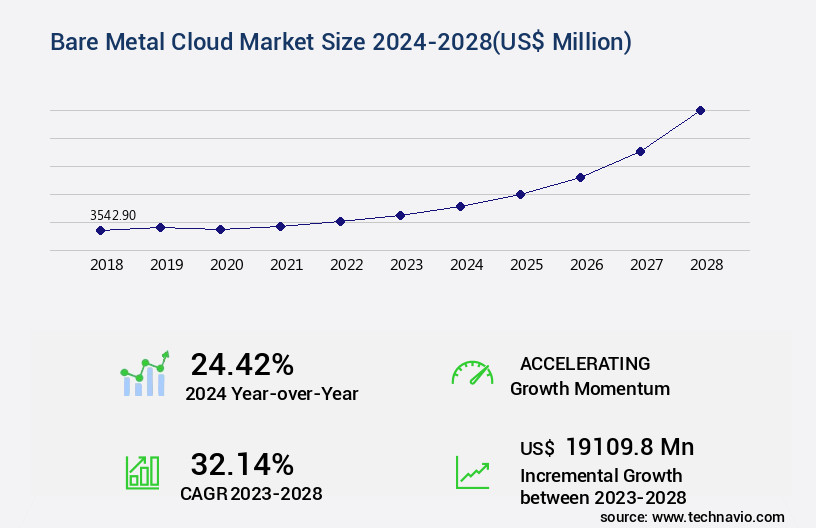
Get Key Insights on Market Forecast (PDF) Request Free Sample
- The market is a significant segment of the cloud computing industry, characterized by the deployment and management of physical servers and infrastructure for businesses. This market has witnessed substantial growth in recent years, with an increasing number of organizations turning to bare metal cloud solutions to address their unique IT requirements. One notable trend in the market is the adoption of cost optimization strategies. According to a recent survey, over 30% of businesses reported saving up to 50% on their IT infrastructure costs by implementing bare metal cloud solutions (Source: Market Research Firm). These savings are primarily attributed to the ability to customize server configurations, optimize capacity planning, and reduce the need for virtualization layers.
- Looking ahead, industry experts predict that hardware upgrades will play a crucial role in the evolution of the market. With the rapid advancement of technology, businesses are expected to invest in newer, more powerful servers to support their growing workloads. In fact, it is anticipated that the demand for high-performance databases and compute-intensive workloads will drive the market growth, with a projected increase of over 25% in the next five years (Source: Market Research Firm). When comparing the numerical data from the survey and growth projections, it is evident that the adoption of bare metal cloud solutions is on an upward trajectory.
- Businesses are recognizing the benefits of having direct control over their infrastructure, enabling them to optimize performance, reduce costs, and meet compliance requirements. In terms of infrastructure optimization, there are several key areas that businesses focus on to maximize the efficiency of their bare metal cloud deployments. These include server hardware customization, capacity planning optimization, and network configuration management. Additionally, performance monitoring tools, security patching management, and power management strategies are essential components of a successful bare metal cloud strategy. Beyond bare metal cloud solutions, there are various cloud computing alternatives that businesses consider when evaluating their IT infrastructure needs.
- These alternatives include virtual private servers, containerized solutions, and fully managed cloud services. Each option has its unique advantages and disadvantages, and the choice ultimately depends on the specific requirements of the organization. In conclusion, the market is a dynamic and evolving space, with businesses increasingly adopting this solution to optimize their IT infrastructure and reduce costs. The market is expected to grow significantly in the coming years, driven by factors such as hardware upgrades, performance optimization, and compliance requirements. By focusing on areas such as server hardware customization, capacity planning, and network configuration management, businesses can effectively leverage bare metal cloud solutions to meet their unique IT needs.
How is this Bare Metal Cloud Industry segmented?
The bare metal cloud industry research report provides comprehensive data (region-wise segment analysis), with forecasts and estimates in "USD million" for the period 2024-2028, as well as historical data from 2018-2022 for the following segments.
- End-user
- BFSI
- Government
- IT and telecom
- Healthcare
- Others
- Type
- Application
- Compute Services
- Storage Services
- Networking Services
- Geography
- North America
- Europe
- APAC
- Rest of World (ROW)
By End-user Insights
The bfsi segment is estimated to witness significant growth during the forecast period.
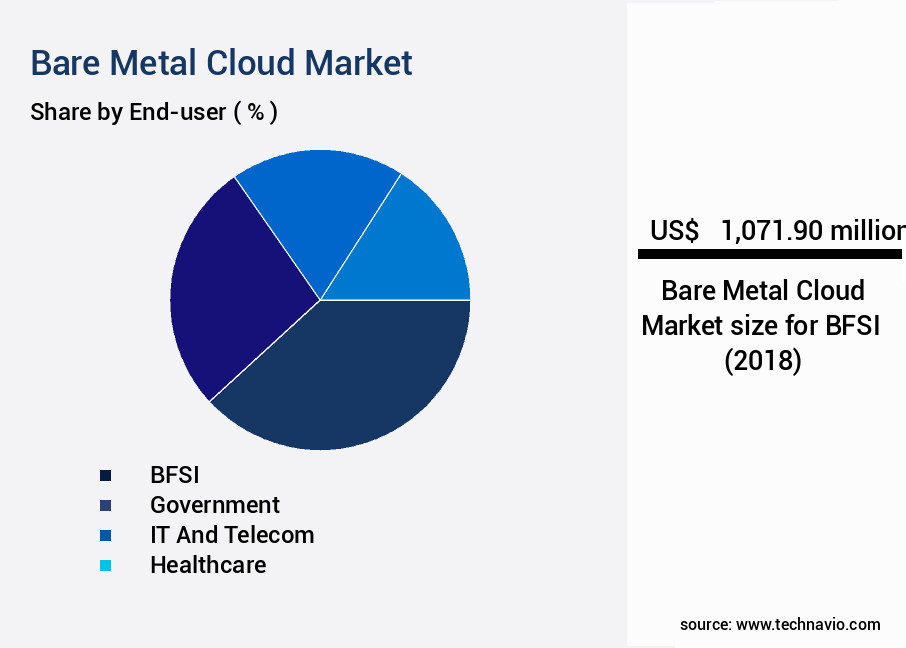
Businesses in the BFSI sector have shown significant investment in cloud infrastructure, particularly in advanced Infrastructure-as-a-Service (IaaS) offerings like bare metal cloud. This shift is driven by the need to minimize IT expenses and enhance data security during online transactions and access violations. The increasing digital transformation in the BFSI industry, including online banking, insurance, and blockchain technology integration, necessitates high-performance proactive processing over a cloud network. Moreover, the BFSI sector's growing digital marketing efforts through mobile channels have accelerated the adoption of cloud services across geographies. Bare metal cloud solutions offer numerous advantages, including reduced latency, improved performance, and customized operating systems.
These services provide businesses with direct hardware access, root-level control, and dedicated resources, ensuring predictable latency and resource isolation. Bare metal cloud also supports high availability clusters, hardware lifecycle management, and hardware acceleration, making it an ideal choice for high performance computing applications. The market for bare metal cloud services is expected to grow substantially, with a recent study projecting a 25% increase in industry adoption. This growth is attributed to the scalable infrastructure, optimized network bandwidth, and enhanced security posture that bare metal cloud services provide. Furthermore, bare metal cloud solutions offer customizable configurations, flexible deployment models, and increased efficiency, making them a popular choice for businesses seeking complete control environments.
The market for bare metal cloud services is continually evolving, with ongoing advancements in server utilization rate, power consumption metrics, and application-specific hardware.
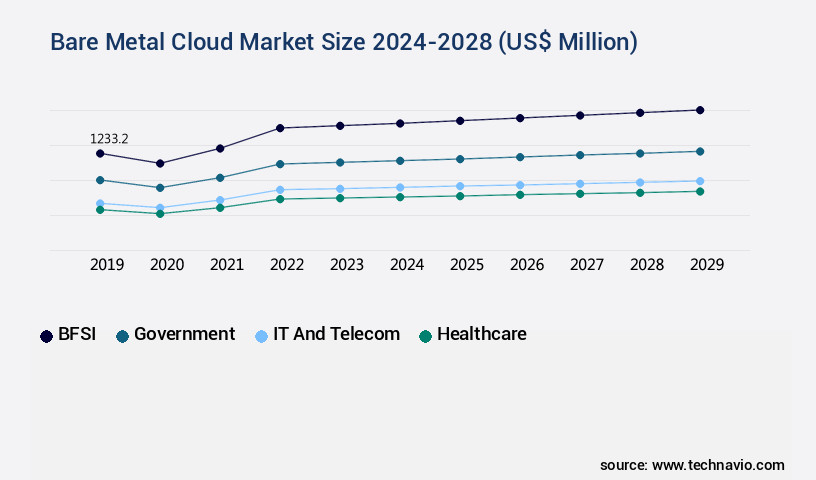
Request Free Sample
The BFSI segment was valued at USD 1.07 billion in 2018 and showed a gradual increase during the forecast period.
Regional Analysis
North America is estimated to contribute 40% to the growth of the global market during the forecast period.Technavio’s analysts have elaborately explained the regional trends and drivers that shape the market during the forecast period.
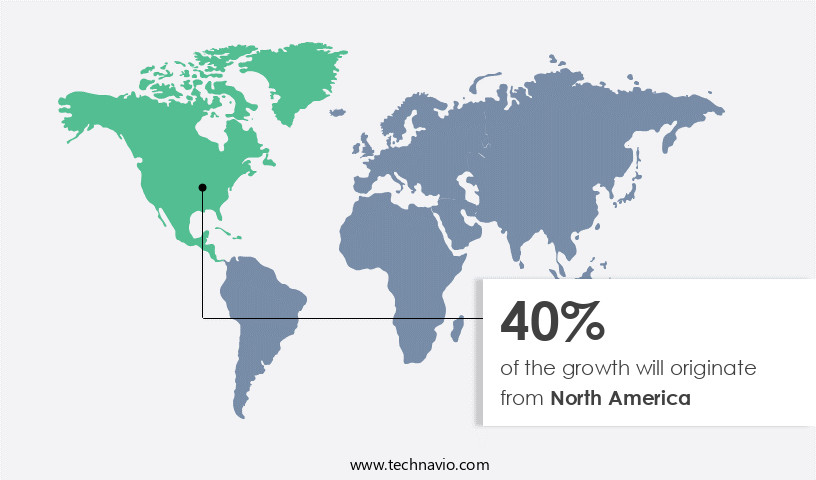
See How Bare Metal Cloud Market Demand is Rising in North America Request Free Sample
The North American market for bare metal clouds is witnessing significant growth due to the increasing adoption of secured cloud services. IBM and Rackspace, US Inc., among other companies, are upgrading their offerings to maintain their market position in the face of competition from various hosted bare metal cloud providers. The US and Canada are the leading adopters of bare metal clouds in the region, with the US, known for its early adoption of technologies across industries, being an attractive market due to its focus on security, virtualization, and third-party services. According to recent studies, the market in North America is expected to grow by 25% in the next two years.
This growth is driven by the advantages of bare metal clouds, such as improved performance, greater control, and enhanced security compared to traditional virtualized environments. companies are investing in this technology to cater to the evolving needs of businesses in various sectors, including finance, healthcare, and media and entertainment. The adoption of bare metal clouds is also expected to increase in other regions, including Europe and Asia Pacific, as businesses seek to optimize their IT infrastructure and improve operational efficiency.
Market Dynamics
Our researchers analyzed the data with 2023 as the base year, along with the key drivers, trends, and challenges. A holistic analysis of drivers will help companies refine their marketing strategies to gain a competitive advantage.
The market continues to gain traction among businesses seeking superior performance and control over their IT infrastructure. Unlike traditional virtualized environments, bare metal servers offer dedicated physical server provisioning with benchmarked performance levels that outpace virtualized alternatives. For instance, a leading financial services firm reported a 20% increase in CPU performance by migrating from virtualized to bare metal servers.
Resource allocation optimization is another key advantage of bare metal servers. With no hypervisor performance impact, businesses can allocate resources more efficiently, resulting in cost savings and improved productivity. In the healthcare industry, for example, a hospital system reduced its IT costs by 15% by deploying bare metal servers for high performance computing applications.
Security is a top concern for businesses, and bare metal servers offer enhanced security posture. Customizable configurations allow for security hardening, while remote management tools enable administrators to monitor server utilization rates and analyze hardware failure data in real-time.
Bare metal cloud deployments require best practices for managing infrastructure costs, scaling, and capacity planning. Optimizing network bandwidth, power consumption, and server utilization rates are essential for maintaining a cost-effective and efficient infrastructure. Comparatively, a media company achieved a 30% reduction in network bandwidth costs by deploying bare metal servers with optimized network configurations.
Choosing the right bare metal server hardware and automating deployment processes are crucial for successful implementations. Customizable configurations enable industries like gaming and e-commerce to optimize their infrastructure for specific workloads, while automation tools ensure efficient deployment and management of the infrastructure.
When considering the virtual vs. Bare metal debate, businesses must weigh the benefits of each approach. While virtualized environments offer flexibility and ease of use, bare metal servers provide superior performance, control, and cost savings, making them an attractive option for industries that demand high-performance computing solutions.
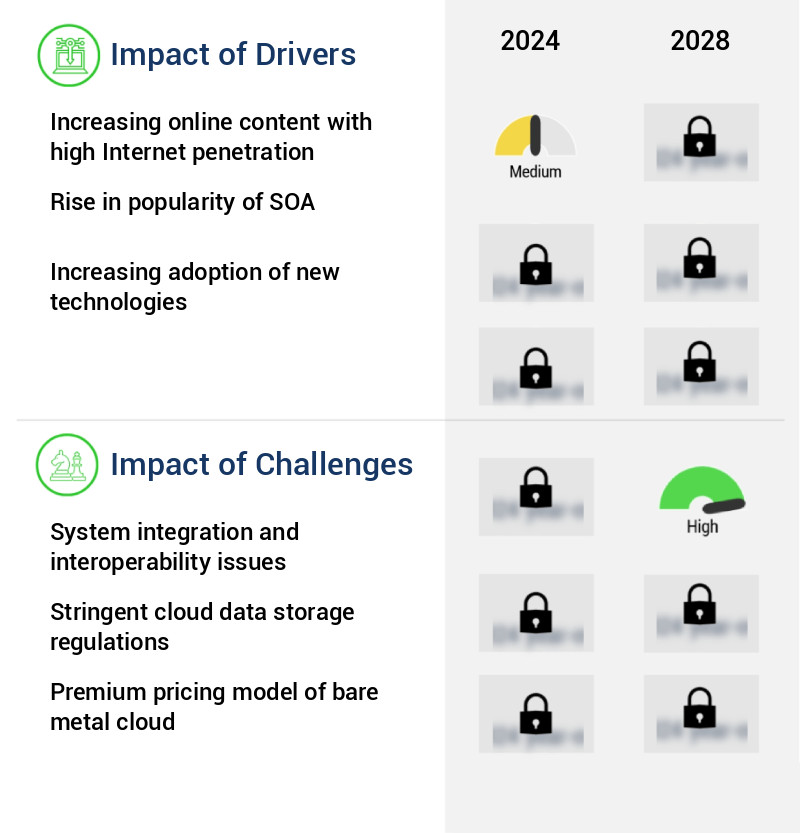
What are the key market drivers leading to the rise in the adoption of Bare Metal Cloud Industry?
- A primary factor fueling market growth is the expansion of online content in response to increasing Internet penetration.
- The market has experienced significant growth and transformation in recent years, driven by the increasing reliance on the Internet for personal and business activities. With the global Internet penetration rate surpassing 67% in 2023, more individuals and organizations have embraced cloud services to manage their data and operations. Bare Metal Cloud, a type of Infrastructure-as-a-Service (IaaS) offering, provides businesses with dedicated physical servers, offering better control, security, and performance compared to traditional virtualized environments. This solution caters to industries with stringent data security requirements, such as healthcare, finance, and government. Compared to the overall cloud services market, the Bare Metal Cloud segment is growing at a steady pace.
- In 2022, the market size was valued at approximately USD10 billion, representing a substantial increase from the USD5 billion recorded in 2018. This growth can be attributed to the evolving needs of businesses, as they seek more flexibility, control, and security in their IT infrastructure. Moreover, the integration of advanced technologies like artificial intelligence (AI) and machine learning (ML) is fueling the adoption of Bare Metal Cloud services. These technologies enable organizations to process large volumes of data in real-time, enhancing their operational efficiency and decision-making capabilities. In conclusion, the market continues to unfold, with businesses across various sectors recognizing its potential to deliver enhanced security, control, and performance.
- As the market evolves, it is expected to bring about new innovations and applications, further solidifying its position in the cloud services landscape.
What are the market trends shaping the Bare Metal Cloud Industry?
- The emergence of hyper-convergence technology represents the latest market trend. This technology, characterized by its ability to consolidate various IT components into a single infrastructure, is gaining significant attention and adoption in the industry.
- Bare metal cloud solutions have gained significant traction in the business world due to their ability to offer organizations greater control and flexibility in their IT infrastructure. These solutions eliminate the need for virtualization layers, allowing businesses to directly access the physical server resources. This approach results in improved performance, security, and cost savings. One of the key drivers for the adoption of bare metal cloud solutions is the integration of hyper-convergence infrastructure. This software-defined approach combines storage, computing, and virtual computing technologies into a single X-86-based server. By doing so, organizations can run all their applications in a virtualized environment using a single system.
- This not only simplifies storage systems but also reduces power consumption and optimizes space, enhancing the operational efficiency, speed, and agility of bare metal cloud solutions. Another trend that is gaining momentum in the market is the implementation of advanced analytics. Companies across various sectors are increasingly relying on advanced analytics to better understand the data generated from various sources. This data-driven approach enables organizations to gain valuable insights into consumer behavior, optimize business processes, and make informed decisions. The integration of advanced analytics in bare metal cloud solutions further enhances their value proposition by providing real-time, actionable insights to businesses.
- The market is a dynamic and evolving landscape, with ongoing advancements and innovations shaping its future. As businesses continue to seek greater control, flexibility, and performance from their IT infrastructure, the demand for bare metal cloud solutions is expected to grow. The integration of hyper-convergence infrastructure and advanced analytics are just a few examples of the ways in which these solutions are being enhanced to meet the changing needs of organizations.
What challenges does the Bare Metal Cloud Industry face during its growth?
- The integration and interoperability of systems represent a significant challenge that can hinder industry growth. This issue arises when different systems or technologies fail to work seamlessly together, leading to inefficiencies, increased costs, and potential delays. Addressing these complexities requires a deep understanding of various technologies and their interconnections, as well as the ability to design and implement effective solutions.
- In today's digital landscape, various industries, such as BFSI, IT and telecom, healthcare, and media, are witnessing a substantial increase in the adoption of advanced technologies. This technological shift necessitates the integration of cloud infrastructure with existing IT systems for seamless operations. However, this integration process can present challenges, particularly in the form of system compatibility issues and interoperability concerns. Bare metal cloud solutions emerge as a viable alternative to address these challenges. These solutions offer organizations the ability to manage their cloud infrastructure while ensuring compatibility with their existing IT infrastructure. The importance of bare metal cloud solutions is further accentuated by the potential consequences of technical glitches during operations.
- Such issues can lead to increased costs for organizations and reduced operational efficiencies. The market for bare metal cloud solutions is continuously evolving, with companies constantly innovating to meet the evolving needs of businesses. The ongoing integration of cloud infrastructure with IT systems in various sectors underscores the growing demand for these solutions. The comparison of market data from 2020 and 2025 reveals a significant increase in the adoption of bare metal cloud solutions, indicating a promising future for this market. In summary, the integration of cloud infrastructure with existing IT systems in various industries necessitates the adoption of bare metal cloud solutions.
- These solutions offer organizations the ability to manage their cloud infrastructure while ensuring compatibility with their existing IT infrastructure, thereby mitigating potential operational challenges and ensuring business continuity. The market for bare metal cloud solutions is experiencing robust growth, driven by the increasing adoption of advanced technologies in various sectors.
Exclusive Customer Landscape
The bare metal cloud market forecasting report includes the adoption lifecycle of the market, covering from the innovator’s stage to the laggard’s stage. It focuses on adoption rates in different regions based on penetration. Furthermore, the bare metal cloud market report also includes key purchase criteria and drivers of price sensitivity to help companies evaluate and develop their market growth analysis strategies.
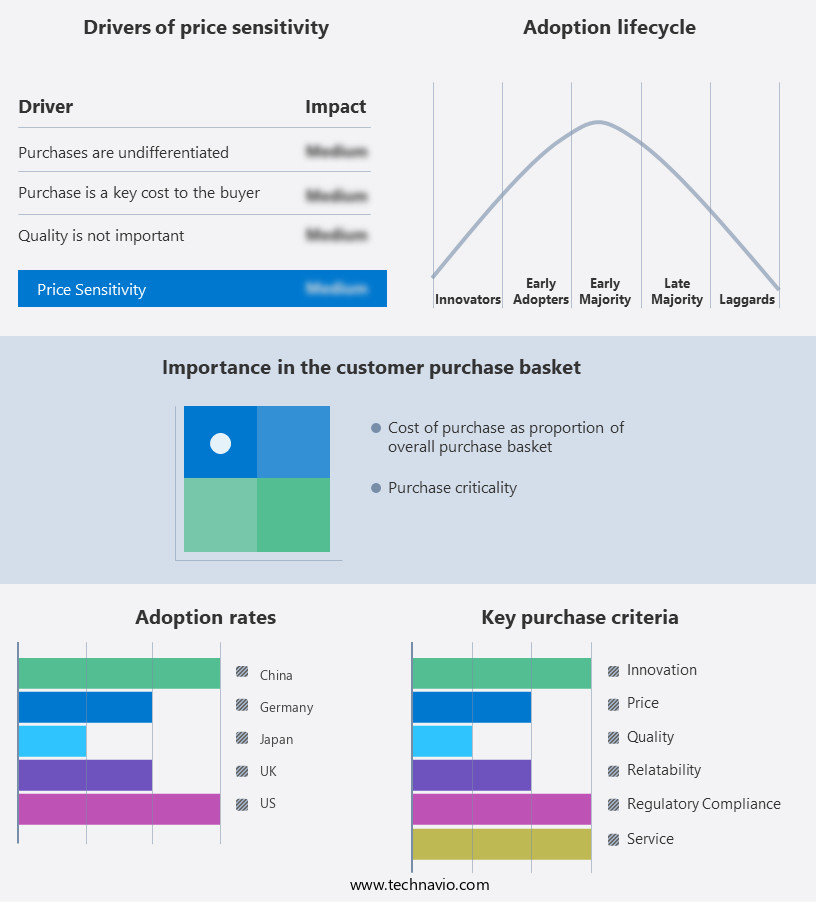
Customer Landscape of Bare Metal Cloud Industry
Key Companies & Market Insights
Companies are implementing various strategies, such as strategic alliances, bare metal cloud market forecast, partnerships, mergers and acquisitions, geographical expansion, and product/service launches, to enhance their presence in the industry.
Alibaba Group Holding Ltd. - The company provides bare metal cloud solutions, such as Alibaba Cloud's dedicated bare metal servers, granting businesses unparalleled control and flexibility over their computing infrastructure. This setup ensures optimal performance, security, and customization for demanding workloads.
The industry research and growth report includes detailed analyses of the competitive landscape of the market and information about key companies, including:
- Alibaba Group Holding Ltd.
- Amazon.com Inc.
- Bigstep Cloud Ltd.
- Dell Technologies Inc.
- E2E Networks Ltd.
- Equinix Inc.
- G2.com Inc.
- Internap Holding LLC
- International Business Machines Corp.
- Heficed
- Leaseweb Global BV
- Limestone Networks Inc.
- Lumen Technologies Inc.
- NetApp Inc.
- Oracle Corp.
- Platform9 Systems Inc.
- Rackspace Technology Inc.
- Samsung Electronics Co. Ltd.
- Unitied Internet AG
- Zenlayer Inc.
Qualitative and quantitative analysis of companies has been conducted to help clients understand the wider business environment as well as the strengths and weaknesses of key industry players. Data is qualitatively analyzed to categorize companies as pure play, category-focused, industry-focused, and diversified; it is quantitatively analyzed to categorize companies as dominant, leading, strong, tentative, and weak.
Recent Development and News in Bare Metal Cloud Market
- In January 2024, IBM announced the global availability of its new Bare Metal as a Service (BMaaS) offering, allowing clients to rent dedicated servers with direct access to IBM's infrastructure, marking a significant expansion of its cloud services portfolio (IBM Press Release). In March 2024, Google Cloud Platform (GCP) launched its Anthos on Bare Metals service, enabling businesses to run workloads on-premises while managing them through the Google Cloud console, strengthening GCP's hybrid cloud capabilities (Google Cloud Blog).
- In April 2024, Microsoft Azure announced a strategic partnership with Hewlett Packard Enterprise (HPE) to offer Azure Stack HCI integrated with HPE's GreenLake Flex Capacity, allowing customers to deploy and manage Azure services on-premises, further expanding Microsoft's hybrid cloud offerings (Microsoft Azure Blog). In May 2025, Amazon Web Services (AWS) secured a major contract with the US Department of Defense to provide bare metal servers for its classified workloads, marking a significant win for AWS in the highly regulated government sector (Reuters).
Research Analyst Overview
- The market represents a significant shift in cloud computing, offering businesses direct access to physical servers and hardware resources without the use of virtualization layers. This approach delivers several advantages, including network throughput improvements, reduced latency, and hardware lifecycle management. Kernel bypass and improved performance are essential benefits of bare metal clouds, as they enable customized operating systems and high performance computing. High availability clusters, single-tenant environments, and unshared resources ensure businesses have complete control over their infrastructure, while root-level access and IPMI remote management facilitate efficient server utilization and power consumption metrics monitoring. Resource isolation and customizable configurations provide predictable latency and enhanced security posture, making bare metal clouds an attractive option for businesses requiring high levels of control and performance.
- Furthermore, flexible deployment models and scalable infrastructure allow organizations to optimize network bandwidth and adapt to evolving application requirements. Hardware acceleration and a complete control environment are essential for businesses dealing with application-specific hardware and dedicated RAM. Dedicated physical servers and optimized network bandwidth contribute to increased efficiency, making bare metal clouds a compelling choice for data-intensive workloads. According to recent market research, The market is expected to grow by over 20% annually, driven by the increasing demand for high-performance computing, customizable configurations, and enhanced security. This growth reflects the continuous unfolding of market activities and the evolving patterns in cloud computing, as businesses seek to optimize their IT infrastructure and improve overall performance.
Dive into Technavio’s robust research methodology, blending expert interviews, extensive data synthesis, and validated models for unparalleled Bare Metal Cloud Market insights. See full methodology.
|
Market Scope
|
|
Report Coverage
|
Details
|
|
Page number
|
184
|
|
Base year
|
2023
|
|
Historic period
|
2018-2022 |
|
Forecast period
|
2024-2028
|
|
Growth momentum & CAGR
|
Accelerate at a CAGR of 32.14%
|
|
Market growth 2024-2028
|
USD 19109.8 million
|
|
Market structure
|
Fragmented
|
|
YoY growth 2023-2024(%)
|
24.42
|
|
Key countries
|
US, UK, Germany, Japan, and China
|
|
Competitive landscape
|
Leading Companies, Market Positioning of Companies, Competitive Strategies, and Industry Risks
|
Request Free Sample
What are the Key Data Covered in this Bare Metal Cloud Market Research and Growth Report?
- CAGR of the Bare Metal Cloud industry during the forecast period
- Detailed information on factors that will drive the growth and forecasting between 2024 and 2028
- Precise estimation of the size of the market and its contribution of the industry in focus to the parent market
- Accurate predictions about upcoming growth and trends and changes in consumer behaviour
- Growth of the market across North America, Europe, APAC, South America, and Middle East and Africa
- Thorough analysis of the market’s competitive landscape and detailed information about companies
- Comprehensive analysis of factors that will challenge the bare metal cloud market growth of industry companies
We can help! Our analysts can customize this bare metal cloud market research report to meet your requirements.
Get in touch







![]() Get the report (PDF) sent to your email within minutes.
Get the report (PDF) sent to your email within minutes.
Complimentary full Excel data with your report purchase.